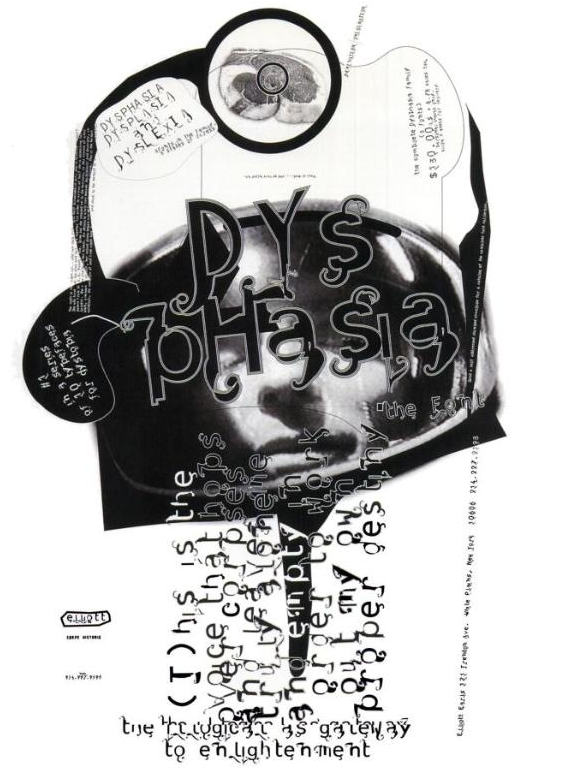It’s really interesting to look back a the history of Graphic design in Deconstruction. Sadly in my undergraduate, we did not covers any of this areas, yet we covers most of History of Fine Arts. Perhaps most of our lectures at that time are from the Fine Arts education background. I wonder, if we learn the history of Graphic Design as part of our curriculum in our undergraduates, will it change our design practices and thinking on Graphic design back in Malaysia? Hmmm…
Continuing on my process of understanding about deconstruction I came to understand that Jacques Derrida’s (a French philosopher) theories seems to be the backbones of the deconstruction process in design and architecture. ‘There’s nothing outside of the text’ (Derrida). He suggest the way the language depends on the play of differences between one word and another, while meaning itself is always deferred. The purpose of such devices was to prevent conceptual closure, or reduction of his texts to an ultimate meaning. All these ideas can be seen at work in post-modern Graphic Design and Derridean concepts such as ‘sous rature’ – the tactic of putting an idea under erasure’ by crossing it out, in order to alert the reader not to accept it at face value – have found their ways to into graphic practices. (Poynor 47:2002)
Here are some designers and authors ideas on deconstruction.
This is how deconstruction arrived in graphic Design. It started through Architecture – during MoMa ( Museum of Modern Arts) which was held an exhibition in 1988 and its catalog that probably did the most to introduce deconstruction to Graphic Designers. The exhibition curated by Philip Johnson with the assistance of Mark Wigley. What distinguished and linked their work argued Wigley, was a sensibility in which ‘the dream of pure form has been disturbed. Form has become contaminated’. Deconstructive architecture he explained does not dismantle buildings, rather it locates the inherent dilemmas within them, exposing the ‘symptoms of a impurity’. (Johnson & Wigley 10:1988)
The process of deconstructions in Graphic Design evolved in late 80’s to late 90’s. There are few discourses about the interpretations of the action taken of deconstruction in Graphic Design practices. Design Historian – Philip Meggs in ‘Deconstructing Typography’ 1990, defines deconstruction as ‘taking the integrated whole apart, or destroying the underlying order that holds a graphic design together. In the same year two graphic designers, Chuck Bryne and Martha Witte, published their definition on deconstruction in design on more critically aware sense of deconstuction’s root in theory. For Bryne and Witte the word refers to the breaking down something in order to ‘decode’ its parts in such a way that these act as ‘informers’ on the thing, or any assumptions or convictions we have regarding it. Their emphasis on deconstruction is simply taking things apart in the hope to make form and giving a new look in print media.
From my readings, I found that there’s two school of practices on deconstruction of Graphic Design, Cranbrook Academy of Art and California Institute of Arts (CalArt). Mc Coys (Katherine and Michael) describe the uses of theory at th academy as
“The emerging ideas emphasized the construction of meaning between the audience and the graphic design piece, a visual transaction that parallels verbal communication. Building on the linguistic theories of semantics but rejecting the faith in scientifically predictable transmission of meaning, these ideas began to have an impact on the students’ graphic work. (Cranbrook Arts Students’ Work, 1978)”
In a poster for Cranbrook graduate programme 1989, Katherine Mc Coy had used a series of Derridean oppositions theory – art/science, mythology/technology, purist/pruralist, vernacular/classic to structure the opposition around the spine.

Jeffery Keedy – Fast Forward book spread, California Institutes of Arts, USA (1993)
‘We want to talk about graphic through our own medium – to articulate our own reflections graphically. Not as cultural theoreticians who have no clue about Font. ‘ – Manuel Krebs



